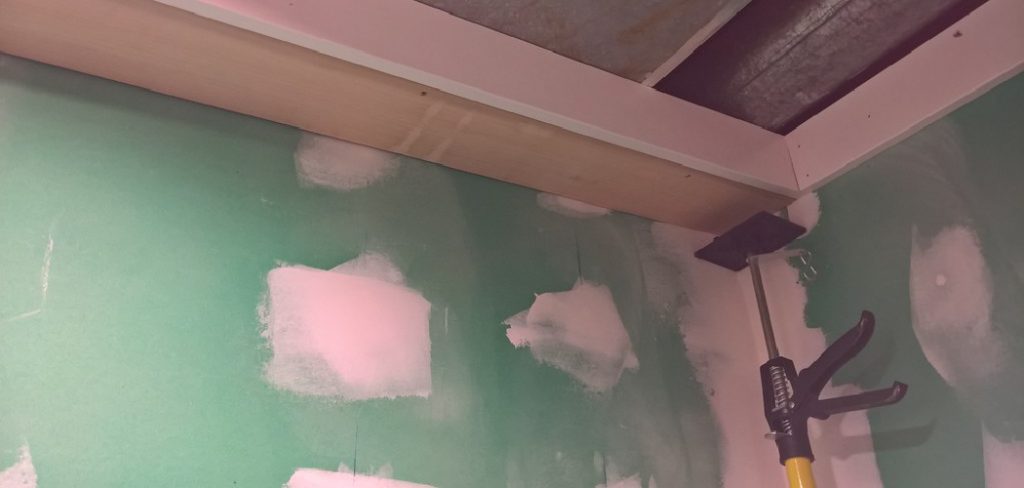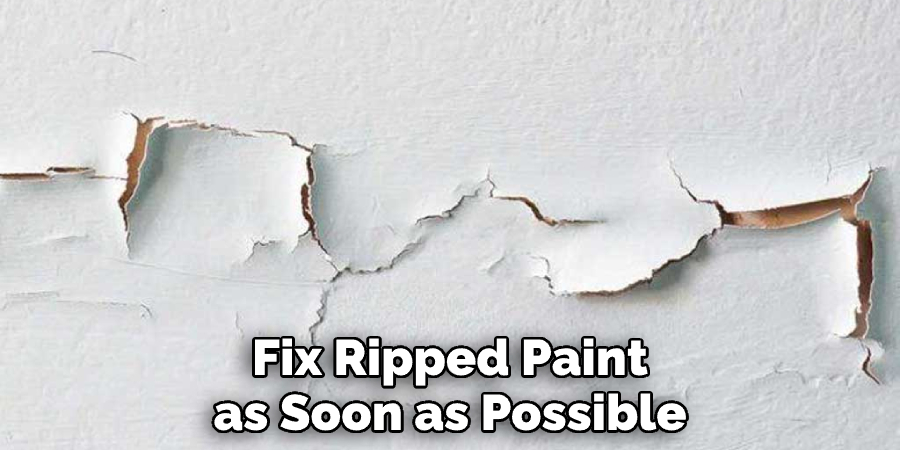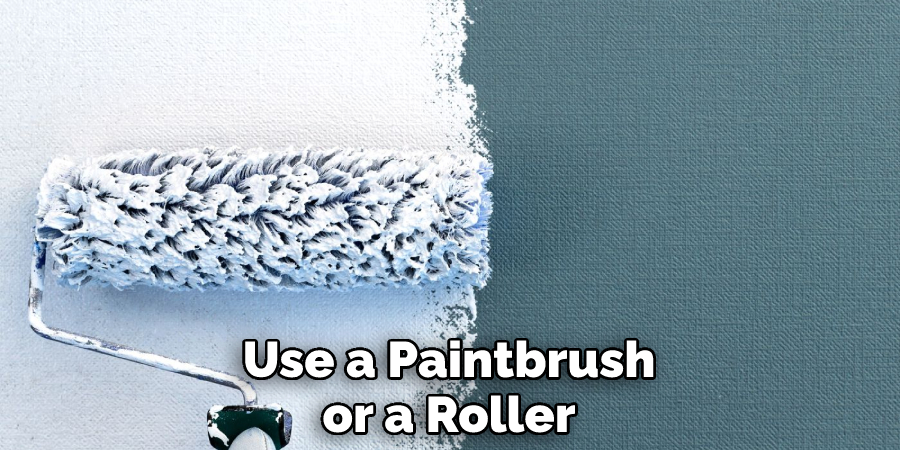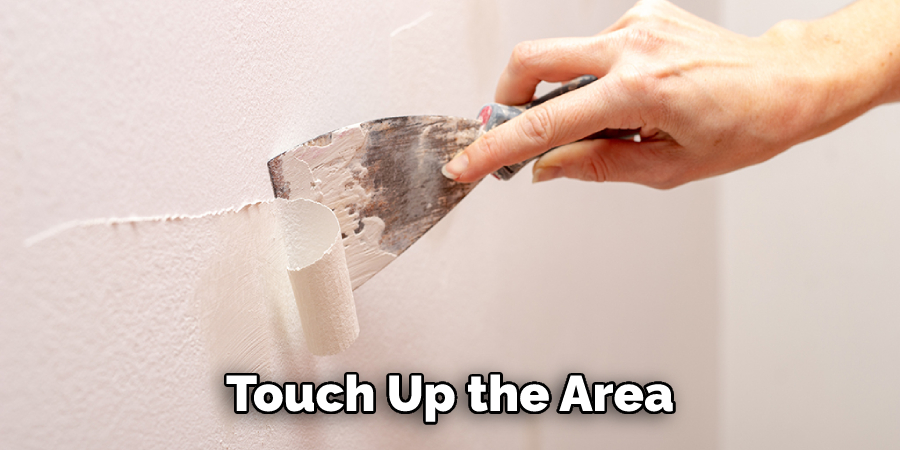If you’ve ever had the unfortunate experience of accidentally ripping the paint off a wall, you know how frustrating it can be. Not only do you have to repair the damage, but you also have to figure out how to make it look like nothing ever happened. In this blog post, we’ll show you how to fix ripped paint on wall quickly and easily. So don’t worry – your walls don’t have to stay ruined forever!

Summary: If your paint is ripped or peeling on the wall, there are a few things you can do to fix it. You can try using a wallpaper paste to fill in the gaps and smooth out the surface. You can also use a water-based paint to cover the rip and then seal it with a coat of spray paint.
What Is Ripped Paint on Wall?
Paint is one of the easiest ways to add color and style to a room, but it can also be one of the most frustrating elements of home décor. No matter how careful you are, paint always seems to find a way to chip, flake, or peel. One of the most common paint problems is ripped paint, which occurs when the paint is pulled away from the wall in long strips. Ripped paint can be caused by several factors, including humidity, poor adhesion, and manual removal.
In most cases, ripped paint can be repaired by sanding down the area and reapplying a new layer of paint. However, if the damage is severe, it may be necessary to remove all of the paint and start from scratch. Either way, ripped paint is a problem that is best addressed as soon as possible to prevent further damage.
Why Should You Fix Ripped Paint on Wall?
Not only is ripped paint an eyesore, but it can also lead to bigger problems down the road. Once the paint starts to peel, it creates a perfect opportunity for moisture to get in and start causing damage to your walls. Cracks and holes in the paint are also a breeding ground for mold and mildew, which can cause serious health problems.
In addition, ripped paint can make it difficult to apply new paint or wallpaper, leading to an even bigger repair bill. So if you’re looking to save money and protect your home, it’s best to fix ripped paint as soon as possible.

How to Fix Ripped Paint on Wall: The Ultimate Guide
Step 1: Determine the Extent of the Damage
The first step is to look closely at the wall and determine how much damage has been done. If the paint is ripped off in large chunks, you will need to do some patching before you can repaint the wall. However, if only a small section of the paint came off, then you can likely just sand down the area and repaint it.
Step 2: Remove all of the Loose Paint
Once you have determined the extent of the damage, you will need to remove all of the loose paint from the wall. You can do this by carefully scraping away the paint with a putty knife or a similar tool. Be sure to remove all of the paint, as any leftover paint will make it difficult for the new paint to stick.
Step 3: Sand Down the Area
After removing all the loose paint, you will need to sand down the area. This will help to create a smooth surface for the new paint to adhere to. Be sure to use fine-grit sandpaper so that you do not damage the wall.

Step 4: Clean the Area
After you have sanded down the area, you will need to clean it. This is important to remove any dust or debris that could prevent the new paint from sticking. You can clean the area with a damp cloth or a mild detergent.
Step 5: Apply Primer
Once the area is clean, you will need to apply primer. This will help the new paint to adhere better and provide a more even finish. Be sure to follow the directions on the primer and allow it to dry completely before proceeding.
Step 6: Paint the Area
After the primer has dried, you can now paint the area. Use a paintbrush or a roller to apply the paint evenly to the surface. Choose a color that closely resembles the original paint color of your wall. Allow the area to dry completely before moving on to the next step.

Step 7: Allow the Paint to Dry
Once you have finished painting, you will need to allow the paint to dry. This can take several hours, so be sure to plan accordingly.
Step 8: Touch Up the Area
Once the paint has dried, you may need to touch up the area. This is especially true if there are any areas where the new paint does not match the surrounding wall. You can touch up these areas with a small brush or a cotton swab.
Now that you know how to fix ripped paint on wall, you can easily repair any damage that has been done. However, be sure to follow these steps carefully to achieve the best results.
You Can Check It Out To Fix a Damaged Wall After Removing Tape

What Causes Paint to Rip?
There are a few things that can cause paint to rip. One is the type of paint. Some paints are just too thin and not meant to be used on certain surfaces. This could be because the paint was made for a different climate or meant for exterior use, and you’re using it on your interior walls. It’s important to check the label to make sure you’re using the right type of paint for the job.
Another thing that can cause paint to rip is if the surface isn’t properly prepared. First, you must ensure you sand down any rough spots and fill in any holes or cracks. If you don’t do this, the paint will have trouble sticking and eventually start peeling and flaking off. Finally, paint can also rip if you apply too many coats.
This is usually because people are trying to cover up a dark color with a light one, or they’re trying to touch up a small area and end up going over the same spot multiple times. If you have to apply more than two or three coats, it’s better to start over with a new can of paint. Following these simple tips should help you avoid any issues with your paint job.
How to Prevent Paint From Ripping
It’s every painter’s nightmare: you’re in the middle of a big project, and suddenly your paint rips! Not only is it a major pain (literally) to have to stop what you’re doing and start again, but it can also set you back hours or even days. So how can you prevent paint from ripping in the first place? The first step is to choose the right type of paint for your project. If you’re painting a large area, opt for oil-based paint; if you’re painting something small, go for water-based.
Once you’ve got your paint, make sure to put primer down before you start painting. This will help the paint adhere better to the surface and provide an extra layer of protection against ripping. Finally, take your time when painting; rushing will only increase the chances of making mistakes. With these tips in mind, you can rest assured that your next painting project will go off without a hitch – no ripped paint in sight!
What Are Some Professional Ways to Fix Ripped Paint on Wall?
Ripped paint on the wall is unsightly and can also be dangerous if the ripped paint is near electrical outlets. If you have ripped paint on your wall, there are a few professional ways to fix it. One way is to use a putty knife to scrape off the loose paint. Once all of the loose paint has been removed, you can apply a new layer of paint to the area.
Another way to fix ripped paint on the wall is to use a patching compound. First, apply the patching compound over the ripped area and then smooth it out with a putty knife. Once the patching compound has dried, you can sand it down and then apply a new layer of paint. If the ripped area is large, you may need to apply multiple layers of patching compound before painting over it. Keep reading for more information about how to fix ripped paint on wall.
You Can Check It Out To Fix a Bad Paint Job
Is It Better to Repaint or Patch up A Wall with Ripped Paint?
The walls are one of the first things visitors see when they enter your home. Therefore, it is important to keep them in good condition. When paint starts to peel or rip, you may wonder whether it is better to repaint the entire wall or simply patch up the damaged area. Both options have their own advantages and disadvantages.
Repainting the entire wall can give your home a fresh, new look. However, it is also more time consuming and expensive than patching up a small area. Patching up a ripped paint section is a quick and easy way to fix the problem. However, it may not match the rest of the wall if the paint has faded over time. Ultimately, your best option will depend on your budget and how much time you are willing to invest in painting your walls.
Frequently Asked Questions
Can You Paint Over Torn Paint?
While it is possible to repair torn paint with a temporary fix, oftentimes the best solution is to replace the entire wall or ceiling. This is because torn paint can often lead to water damage and structural problems that need to be fixed as soon as possible.
If you’re unsure whether or not your painting needs replacement, it’s always best to consult an expert. They will be able to assess the damage and recommend a course of action that will ensure your home remains safe and functional while you continue living in it.
What Happens If You Paint Over Cracked Paint?
If you paint over cracked or peeling paint, the new paint will likely not adhere to the old layer and may start to peel and crack again. This is because the new surface is not covered in a protective film that was created while the original layer dried. You can try using a hardener before painting or use a fresh coat of primer if necessary.
Does Paint Get Lighter Or Darker As It Dries?
This is a tricky question because there are many factors that can affect the opacity or lightness of paint as it dries. Some of these factors include the type of paint, the quality of the paint, the weather conditions, and the user’s technique.
That being said, in general, acrylics will tend to be lighter than oils, and watercolors will be lighter than gouache or oil paint.
Will Touch Up Paint Eventually Blend In?
most paints will eventually blend in over time if they are applied correctly and with regular care. If you’re not sure whether your paint job has been applied properly or if it needs further adjustment, ask a qualified painter for help. They can also give you tips on how to keep your painted surfaces looking their best over time.
Conclusion
All in all, repairing ripped paint on a wall is not as daunting as it may seem. You can fix the problem relatively easily and quickly if you have the right tools and materials on hand. Thanks for reading our post about how to fix ripped paint on wall. By following the steps we outlined above, you should be able to repair your walls like a pro in no time at all!
You Can Check It Out To Fix Cloudy Varnish on Acrylic Painting
